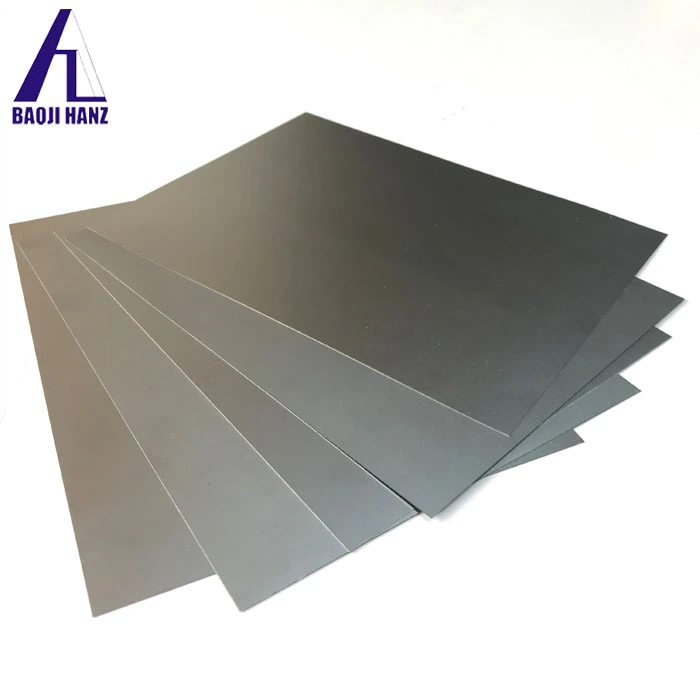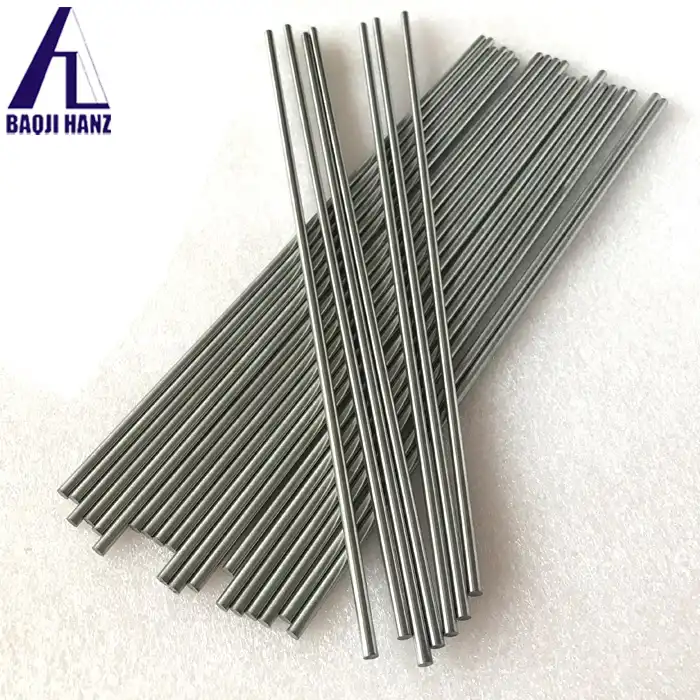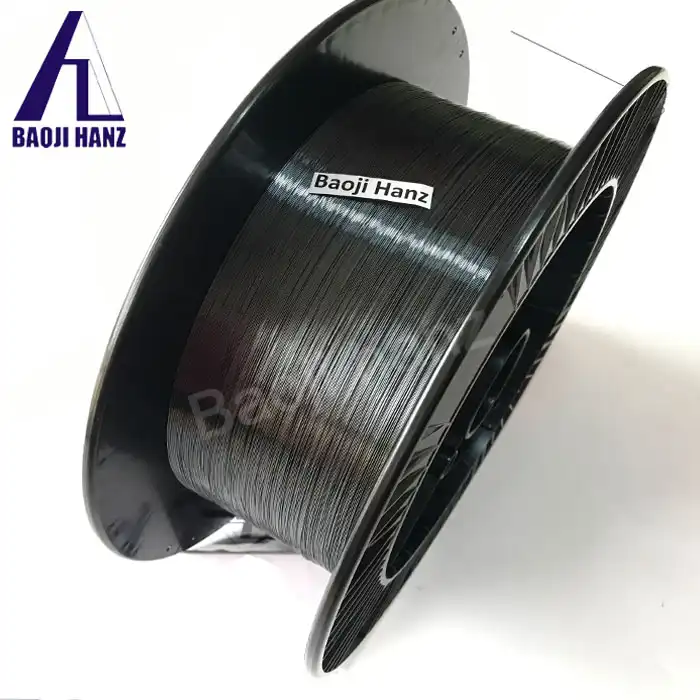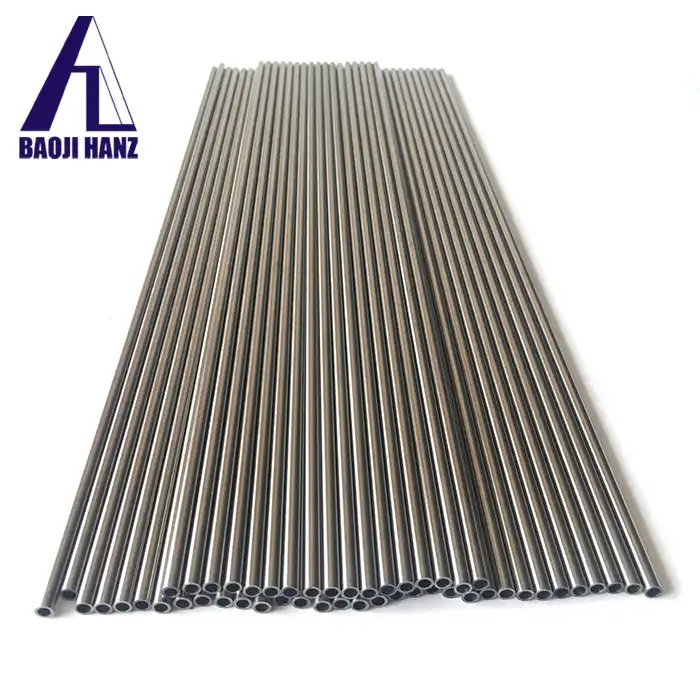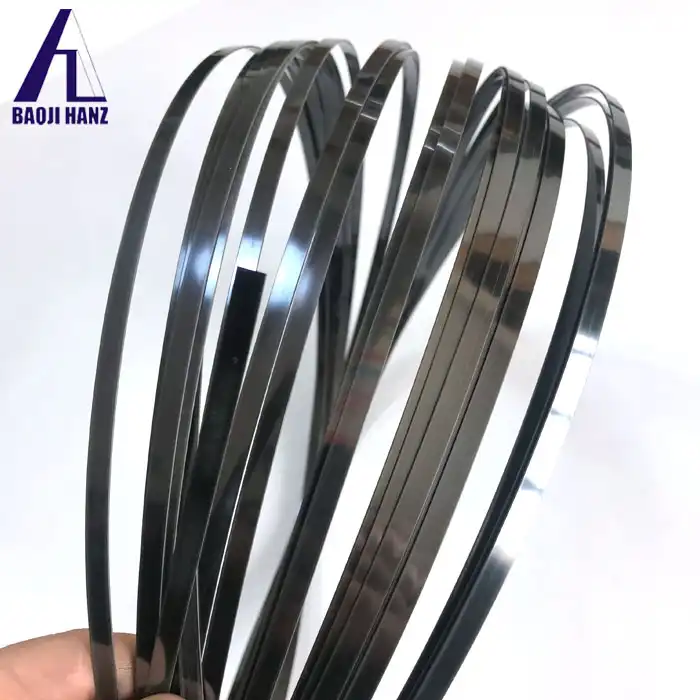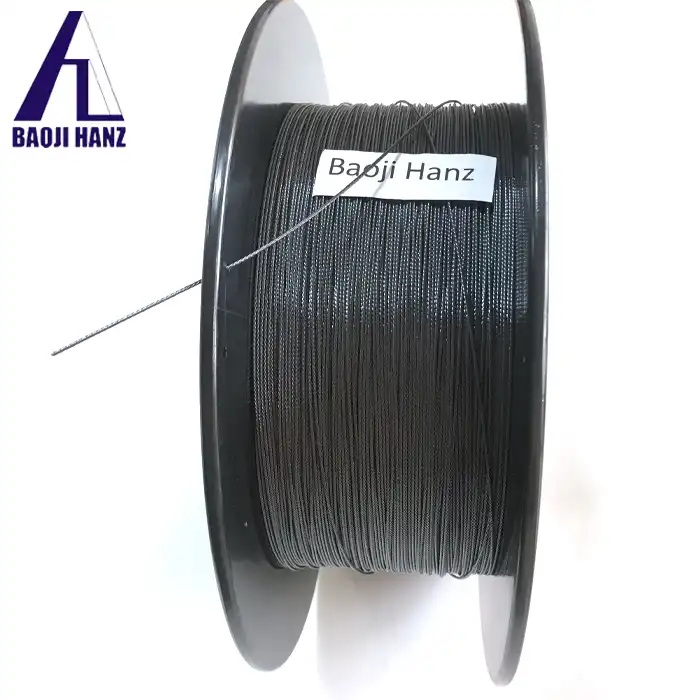What medical applications use superelastic titanium nickel alloy wire?
2025-04-17 19:43:20
Medical superelastic titanium nickel alloy wire has revolutionized various medical fields due to its exceptional mechanical properties and biocompatibility. This advanced material, primarily composed of nickel and titanium (NiTi), exhibits remarkable elasticity, shape memory effects, and resistance to fatigue - making it ideal for applications where flexibility, durability, and reliability are paramount. In modern medicine, these wires are extensively utilized in cardiovascular interventions (stents, guidewires), orthodontics (archwires), neurosurgical procedures (micro-guidewires), orthopedic treatments (bone fixation devices), and minimally invasive surgeries. The unique combination of superelasticity and biocompatibility has enabled medical device manufacturers to create smaller, more effective tools that reduce patient trauma and improve clinical outcomes.
Cardiovascular Applications of Superelastic Titanium Nickel Alloy Wire
Stent Manufacturing and Design
Medical superelastic titanium nickel alloy wire serves as the foundation for modern stent technology, revolutionizing cardiovascular interventions. When crafting these life-saving devices, manufacturers leverage the wire's exceptional flexibility and shape memory properties to create stents that can navigate through complex vascular pathways while maintaining structural integrity. The production process involves precision engineering of Medical superelastic titanium nickel alloy wire with diameters typically ranging from 0.1mm to 0.4mm, carefully calibrated to meet specific vascular requirements. Baoji Hanz Metal Material Co., Ltd. manufactures these wires with state-of-the-art technology to meet stringent international standards, ensuring consistent performance across various clinical settings. Their wires exhibit high superelasticity that ensures flexibility and resilience - critical factors for successful stent deployment and longevity. The biocompatibility of these wires meets medical-grade safety standards, minimizing the risk of adverse reactions when implanted in the human body. With ISO9001:2015, ISO13485:2016, and CE certifications, these medical-grade wires provide cardiologists with reliable materials for creating self-expanding stents that can withstand the challenging environment within blood vessels while maintaining patency over extended periods.
Guidewire Functionality in Interventional Procedures
The application of Medical superelastic titanium nickel alloy wire in guidewire manufacturing has transformed interventional cardiology procedures. These specialized wires, typically ranging from 0.2mm to 0.5mm in diameter, serve as the navigational tools that enable cardiologists to access remote vascular regions with minimal trauma. Baoji Hanz Metal Material Co., Ltd. produces these wires with precision manufacturing techniques that ensure tight dimensional tolerances for consistent performance during critical procedures. The superelastic properties of these wires allow interventionalists to navigate tortuous blood vessels safely, as the material recovers its original shape after deformation when navigating through complex anatomical structures. The durability of Medical superelastic titanium nickel alloy wire, resistant to corrosion and fatigue even in challenging environments such as blood and contrast media, ensures reliable performance throughout lengthy procedures. With customization options available, including OEM services that can adjust wire properties for specific clinical applications, physicians can select the optimal guidewire characteristics for their particular procedural needs. Medical superelastic titanium nickel alloy wire's high strength-to-weight ratio also ensures lightweight yet robust performance, allowing for precise tactile feedback without sacrificing the structural support necessary for complex interventions, making it the material of choice for leading cardiovascular device manufacturers worldwide.
Occlusion Devices for Structural Heart Defects
Medical superelastic titanium nickel alloy wire has revolutionized the treatment of structural heart defects through the development of sophisticated occlusion devices. These specialized implants, crafted from wires typically ranging from 0.3mm to 0.8mm in diameter, provide minimally invasive solutions for conditions like atrial septal defects, patent foramen ovale, and left atrial appendage closure. Baoji Hanz Metal Material Co., Ltd. supplies these wires with secure and sterile packaging, ensuring they maintain their critical properties until deployment. The shape memory effect of these wires is particularly valuable in occlusion devices, as it allows the implant to be compressed during delivery through narrow catheters and then expand to its predetermined shape once positioned at the defect site. The fatigue resistance of Medical superelastic titanium nickel alloy wire makes it suitable for withstanding the repeated mechanical stress of cardiac contractions, ensuring long-term stability of the implant. Its corrosion resistance enables it to withstand body fluids and sterilization processes without degradation of mechanical properties. The material's biocompatibility minimizes inflammatory responses at the implant site, promoting tissue integration and reducing complications. With a minimum order quantity of just 1 piece and the availability of OEM services, even specialized medical device manufacturers can access these high-performance materials for creating custom occlusion devices tailored to specific patient anatomies, significantly expanding treatment options for complex structural heart conditions while minimizing surgical risks.
Orthopedic and Spinal Applications of Superelastic Titanium Nickel Alloy Wire
Bone Fixation and Fracture Healing Systems
Medical superelastic titanium nickel alloy wire has transformed orthopedic treatment strategies, particularly in the development of advanced bone fixation systems. These specialized wires, typically manufactured with diameters ranging from 1.0mm to 3.0mm, provide orthopedic surgeons with dynamic fixation options that accommodate bone remodeling during the healing process. Baoji Hanz Metal Material Co., Ltd. produces these wires with material composition precisely controlled to achieve optimal mechanical properties for orthopedic applications. The exceptional superelasticity of these wires allows for controlled micromotion at fracture sites, which research indicates can stimulate callus formation and accelerate healing when compared to rigid fixation systems. When implanted, Medical superelastic titanium nickel alloy wire exerts a constant, gentle force that maintains alignment while allowing physiological load sharing - a critical factor in preventing stress shielding and subsequent bone density loss.
The precision manufacturing capabilities of suppliers like Baoji Hanz, with tight dimensional tolerances for consistent performance, ensure that surgeons can rely on predictable mechanical behavior when designing treatment plans. The wire's shape memory effect enables innovative fixation techniques where implants can be designed to gradually change shape or exert different forces at different healing stages, personalizing the treatment to the patient's specific fracture pattern. With customization options available through OEM services, orthopedic device manufacturers can develop proprietary fixation systems tailored to specific fracture types, anatomical locations, or patient populations, expanding the range of treatable conditions while potentially reducing recovery times and improving functional outcomes.
Spinal Stabilization and Fusion Techniques
The application of Medical superelastic titanium nickel alloy wire in spinal surgery has revolutionized stabilization and fusion procedures, offering surgeons materials that more closely mimic the biomechanical characteristics of natural spinal structures. These specialized wires, available in diameter ranges from 0.8mm to 2.5mm, have enabled the development of dynamic stabilization systems that preserve some degree of controlled motion while providing necessary support to compromised spinal segments. Baoji Hanz Metal Material Co., Ltd. offers these wires with consistently high superelasticity that ensures flexibility and resilience - critical factors for successful long-term outcomes in spinal procedures. The shape memory effect of Medical superelastic titanium nickel alloy wire allows implants to exert continuous, physiologically appropriate forces even as the spine undergoes positional changes during normal activities.
This property is particularly valuable in cases where traditional rigid fusion would create undesirable stress concentration at adjacent levels. The biocompatibility of these wires meets medical-grade safety standards, minimizing the risk of adverse reactions when used in the delicate environment surrounding neural elements. The fatigue resistance of the material, suitable for withstanding repeated mechanical stress during millions of spinal movements, provides surgeons and patients with confidence in the longevity of the implant. With secure and sterile packaging and ISO13485:2016 certification, these medical-grade materials meet the stringent requirements for spinal applications. The customization options available through OEM services allow for the development of patient-specific solutions, particularly valuable in complex deformity correction or revision surgeries where standard implants may be insufficient to address unique anatomical challenges.
Trauma Fixation Devices and Intramedullary Solutions
Medical superelastic titanium nickel alloy wire has transformed trauma care through its application in advanced fixation devices and intramedullary solutions. These specialized wires, typically ranging from 1.5mm to 5.0mm in diameter for intramedullary applications, provide orthopedic trauma surgeons with fixation options that combine stability with controlled flexibility - a balance that traditional materials like stainless steel or titanium alloys cannot achieve. Baoji Hanz Metal Material Co., Ltd. manufactures these wires with durability that ensures resistance to corrosion and fatigue, even in the challenging post-trauma environment where healing tissues generate diverse biological factors. The high strength-to-weight ratio of Medical superelastic titanium nickel alloy wire ensures lightweight yet robust performance, reducing the burden on healing bone while maintaining necessary structural support. This property is particularly valuable in load-bearing applications such as femoral or tibial shaft fractures where implant weight can impact mobility during recovery.
The corrosion resistance of the material enables it to withstand both internal biological environments and external sterilization processes without degradation of mechanical properties. Surgeons can take advantage of the wire's shape memory effect in designing fixation systems that recover their original shape after deformation, allowing for minimally invasive insertion followed by expansion to the desired configuration once positioned correctly. With application standards meeting medical-grade quality requirements and certifications including ISO9001:2015, these materials provide reliable performance in critical trauma applications. The availability of customization options through OEM services enables device manufacturers to develop specialized solutions for complex fracture patterns or anatomical regions where standard fixation methods may be compromised, ultimately expanding treatment options for challenging trauma cases.
Dental and Orthodontic Applications of Superelastic Titanium Nickel Alloy Wire
Archwires for Orthodontic Treatment
Medical superelastic titanium nickel alloy wire has revolutionized orthodontic treatment protocols, particularly in the development of high-performance archwires that deliver consistent, gentle forces to achieve tooth movement. These specialized wires, typically manufactured in diameter ranges from 0.014" to 0.022", provide orthodontists with unparalleled control over tooth positioning while minimizing patient discomfort. Baoji Hanz Metal Material Co., Ltd. produces these wires with precision manufacturing that ensures tight dimensional tolerances for consistent performance across various clinical applications. The exceptional superelasticity of these wires allows them to exert relatively constant forces over large ranges of deflection, eliminating the need for frequent wire changes and adjustment appointments. This unique mechanical property enables Medical superelastic titanium nickel alloy wire to apply biomechanically optimized forces that stimulate cellular responses for tooth movement while minimizing the risk of root resorption or other complications associated with excessive force application.
The material's shape memory effect, which allows it to recover its original shape after deformation, is particularly valuable in complex malocclusion cases where wires must navigate significant tooth misalignments while maintaining their programmed force delivery characteristics. With customization options available through OEM services, orthodontic specialists can obtain wires with specific force characteristics tailored to particular treatment phases or patient needs. The fatigue resistance of Medical superelastic titanium nickel alloy wire makes it suitable for withstanding repeated mechanical stress during mastication and wire activation, ensuring reliable performance throughout the treatment duration. The biocompatibility of these materials meets medical-grade safety standards, minimizing the risk of adverse tissue reactions during the extended treatment periods typical of orthodontic therapy, making them the preferred choice for modern orthodontic practice.
Endodontic Instrumentation and Root Canal Therapy
Medical superelastic titanium nickel alloy wire has transformed endodontic practice through the development of advanced instruments that navigate complex root canal anatomies with unprecedented safety and efficiency. These specialized wires, typically processed into endodontic files with diameters ranging from 0.15mm to 0.60mm, provide clinicians with tools that conform to canal curvatures while maintaining cutting efficiency. Baoji Hanz Metal Material Co., Ltd. manufactures these wires with state-of-the-art technology to meet stringent international standards, ensuring consistent performance during delicate root canal procedures. The exceptional superelasticity of Medical superelastic titanium nickel alloy wire allows endodontic instruments to navigate severely curved canals with minimal risk of transportation or perforation - complications that were common with traditional stainless steel instruments. This property enables files to maintain their central position within the canal while effectively removing infected dentin, preserving the natural canal morphology.
The material's high fatigue resistance, suitable for withstanding repeated mechanical stress during rotational or reciprocating motions, significantly reduces instrument separation rates compared to conventional materials. The corrosion resistance of these wires enables them to withstand aggressive irrigation solutions and sterilization processes without degradation of mechanical properties. With precision manufacturing that ensures tight dimensional tolerances, endodontic instruments made from Medical superelastic titanium nickel alloy wire deliver consistent performance across various canal configurations and clinical scenarios. The availability of these high-performance materials with customization options through OEM services has enabled endodontic manufacturers to develop proprietary instrument systems with unique cross-sections, tapers, and cutting geometries, expanding treatment options for challenging cases while potentially reducing procedure time and improving clinical outcomes for millions of root canal patients worldwide.
Dental Implant Components and Surgical Guides
Medical superelastic titanium nickel alloy wire has enabled significant advancements in dental implantology, particularly in the development of adaptive components that accommodate the biomechanical complexity of the oral environment. These specialized wires, typically utilized in diameters ranging from 0.3mm to 2.0mm for implant applications, provide prosthodontists and oral surgeons with solutions that better mimic the natural tooth-periodontal ligament complex. Baoji Hanz Metal Material Co., Ltd. offers these wires with material composition precisely controlled to achieve optimal mechanical properties while maintaining the biocompatibility essential for direct contact with oral tissues. The high superelasticity of Medical superelastic titanium nickel alloy wire ensures flexibility and resilience, allowing for the development of stress-distributing components that may reduce crestal bone loss associated with rigid implant systems.
This property has proven particularly valuable in immediate loading protocols, where controlled micromotion within physiological limits can promote osseointegration while preventing destructive overloading. The shape memory effect of these wires enables the creation of expandable components that can adapt to patient-specific anatomies, improving primary stability in challenging extraction sockets or compromised alveolar ridges. With fatigue resistance suitable for withstanding repeated mechanical stress during mastication cycles, these materials provide long-term reliability in the demanding oral environment. The precision manufacturing capabilities, with tight dimensional tolerances for consistent performance, ensure predictable mechanical behavior critical for treatment planning and long-term success. The availability of customization options through OEM services has allowed implant manufacturers to develop innovative components that address specific clinical challenges, such as compensation for implant angulation or improvement of load distribution in full-arch restorations, ultimately expanding treatment options for complex cases while potentially improving patient comfort and restoration longevity.
Conclusion
Medical superelastic titanium nickel alloy wire has transformed numerous medical specialties by enabling the development of devices that combine flexibility, strength, and biocompatibility. From cardiovascular stents to orthodontic archwires and neurological interventions, this remarkable material continues to advance patient care across multiple disciplines. As manufacturing technology evolves, we can expect even more innovative applications to emerge, further expanding the boundaries of minimally invasive medicine.
Looking for premium quality Medical superelastic titanium nickel alloy wire for your next medical device project? With 7 years of expertise in Nitinol Shape Memory Alloy and Superelastic Nitinol Alloy manufacturing, Baoji Hanz Metal Material Co., Ltd. delivers superior products at competitive prices. Save on costs through our direct supply chain while benefiting from rapid delivery from our extensive inventory of standard sizes. Whether you need custom specifications or standard products, our team is ready to collaborate with you to ensure our materials seamlessly integrate into your designs. Contact us today at baojihanz-niti@hanztech.cn to discuss how we can support your specific requirements and help bring your innovative medical devices to market faster.
Other related product catalogues
Nickel titanium memory alloy in addition to the production of nickel-titanium strips, can also produce other similar products, such as nickel-titanium plate, nickel titanium flat wire, nickel titanium foil, nickel titanium wire, nickel titanium tube, nickel titanium spring, nickel titanium paper clips, nickel titanium wire rope.
|
|
|
|
|
|
|
|
References
1. Duerig, T. W., Pelton, A. R., & Stöckel, D. (1999). An overview of nitinol medical applications. Materials Science and Engineering: A, 273-275, 149-160.
2. Petrini, L., & Migliavacca, F. (2011). Biomedical Applications of Shape Memory Alloys. Journal of Metallurgy, 2011, 1-15.
3. Morgan, N. B. (2004). Medical shape memory alloy applications—the market and its products. Materials Science and Engineering: A, 378(1-2), 16-23.
4. Es-Souni, M., Es-Souni, M., & Fischer-Brandies, H. (2005). Assessing the biocompatibility of NiTi shape memory alloys used for medical applications. Analytical and Bioanalytical Chemistry, 381(3), 557-567.
5. Stoeckel, D., Pelton, A., & Duerig, T. (2004). Self-expanding nitinol stents: material and design considerations. European Radiology, 14(2), 292-301.
6. Machado, L. G., & Savi, M. A. (2003). Medical applications of shape memory alloys. Brazilian Journal of Medical and Biological Research, 36(6), 683-691.

